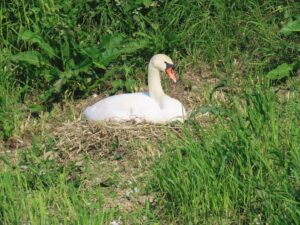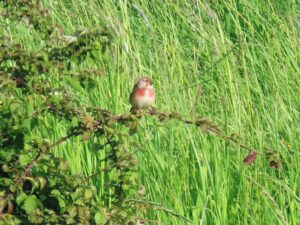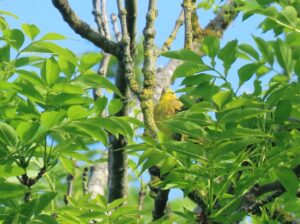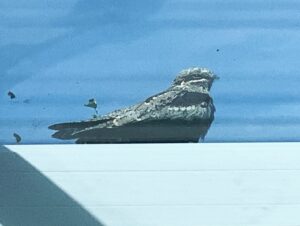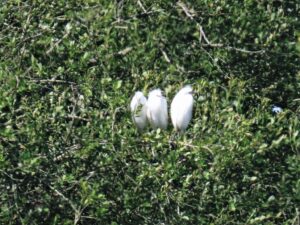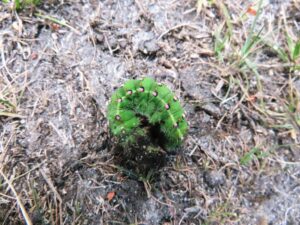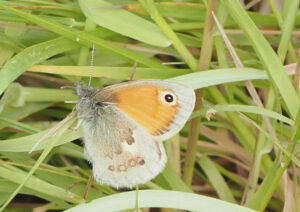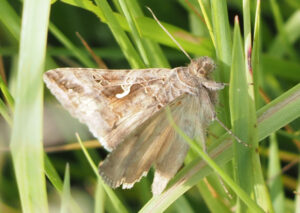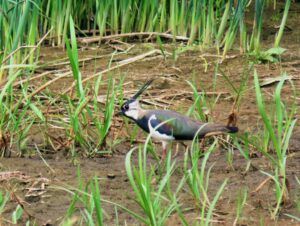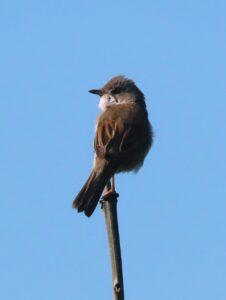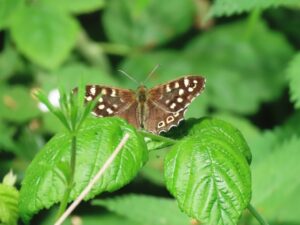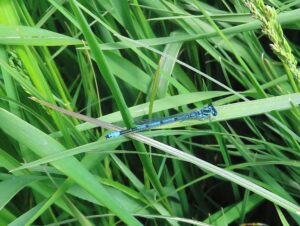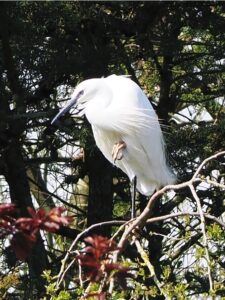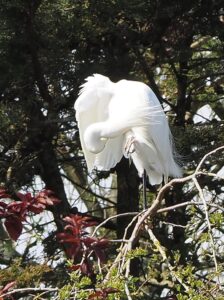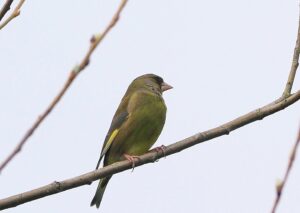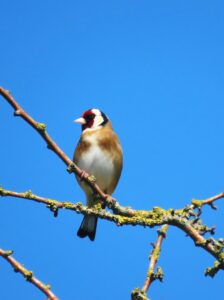Eight of us were on Paul’s walk this morning – unfortunately Paul wasn’t one of them, as he was suffering from a poorly foot! So starting off were myself, Angela, Hazel, Mark & Hannah (with George the setter) Daniel and son Sam (age 10) – Sam’s Mum Sharon swapped with Daniel just over half way round.
Among the birds we saw from the car park was a Heron which surprisingly flew over very low – maybe after a garden fish pond? Not long after the guide hut a Nightingale was singing on the left – the only one we heard today. A bit further on and a Whitethroat treated us to a wonderful singing and flight display, and there was a quiet Yellowhammer lurking nearby. Heard a distant Cuckoo to the east, and that was probably the bird Mark saw fly across a field by Little Betley. Near the bridge a Reed Warbler was singing in a ditch to the east, and we saw a Red Kite. Along the first part of the riverbank Sam spotted a bird in a bare tree – it was the Cuckoo, so were able to get ‘scope views, as we were of a Yellowhammer and Reed Bunting on the northern bank. Just before the bend of the river we had amazing views of a Barn Owl hunting over the adjacent field, including a catch, when it dropped down into the long grass and after about a minute, came up with something round and dark in its talons.
Turning south, a very smart male Linnet looked stunning in the scope, and I spotted a distant Lapwing in a ploughed field. Then one rose up from just the other side of the river and was displaying beautifully, really close. We heard Green Woodpecker, Greenfinch and Moorhen, and a Mute Swan was sitting on a nest on the other bank. Finally saw a Buzzard as we neared New Inn Farm, and a Swallow flew over. There were a few more flying around Canons.
Along the bridleway there was a brief glimpse of a Jay in flight, and we finished with a “buy one get one free” set of wagtails as we got back to the village – a Pied Wagtail on the roof of Acacia Rentals, then a colourful Grey Wagtail at Grommetts.
Species total was 47. Which we managed without Nuthatch, Long-tailed Tit or Goldcrest. Though one of the latter was singing in our hedge and House Martins were chattering overhead as soon as I got home. Super walk, thanks to all for their company and spotting!
